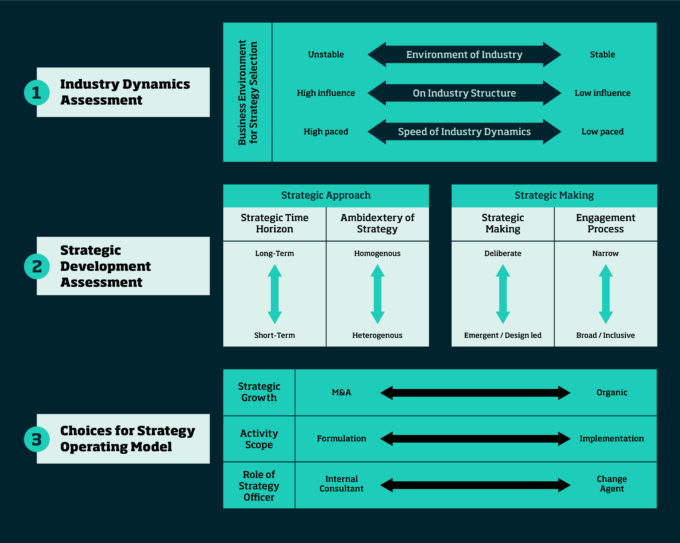In an era of fast-changing markets, now is the time to change your approach to strategy. The ISC framework will put your organization on the right track.
In strategy formulation and execution, most organizations face a similar dilemma: how to develop a strategy and execute it to ensure value creation?
Against disruptive growth and fast-changing markets, accelerated strategy execution has become vital – all the more so when technology and disruptive innovation open ever more doors to new strategic possibilities.
That has challenged the dominant assumption that boundaries between industries are relatively stable, allowing businesses time to adjust to change. Empirical research, leading to publications such as Your Strategy needs a Strategy (Reeves et al., 2015) or The Essence of Strategy Is Now How to Change (Hunsaker & Knowles, 2020) now demonstrate the credo is invalid.
Businesses are addressing the shift through changes in the C-Suite. While the role of Chief Strategy Officer has flourished in the past two decades, ever more organizations are making space for the Chief Transformation Officer. Often, this function is created to look beyond strategy formulation to enhance execution in business transformation. That is paramount where an organizational set-up falls short in coping with a vast number of strategic initiatives happening in parallel at different levels and cutting across traditional divisional or functional boundaries.
But what are the choices to reinforce strategy formulation and execution? And how should the operating model look?
We turned to strategy practitioners across industries and geographies, and relevant academic research, analyzing different organizational structures for strategy development and identifying parameters influencing them.
Diagnose your approach to strategy and create a structure helping your organization to transform and excel
The most pertinent parameters were consolidated in a framework diagnosing Industry Dynamics, Strategy Development as is, and then deriving Choices (ISC). Each component includes secondary parameters dependent on the organization’s business ecosystem. Together, the information allows one to select the right strategy operating and governance model (see chart).
Consider the framework like setting a curser on each parameter’s continuum. Working through the ISC framework in order will help identify the ideal position of the “curser” for your operating model.






